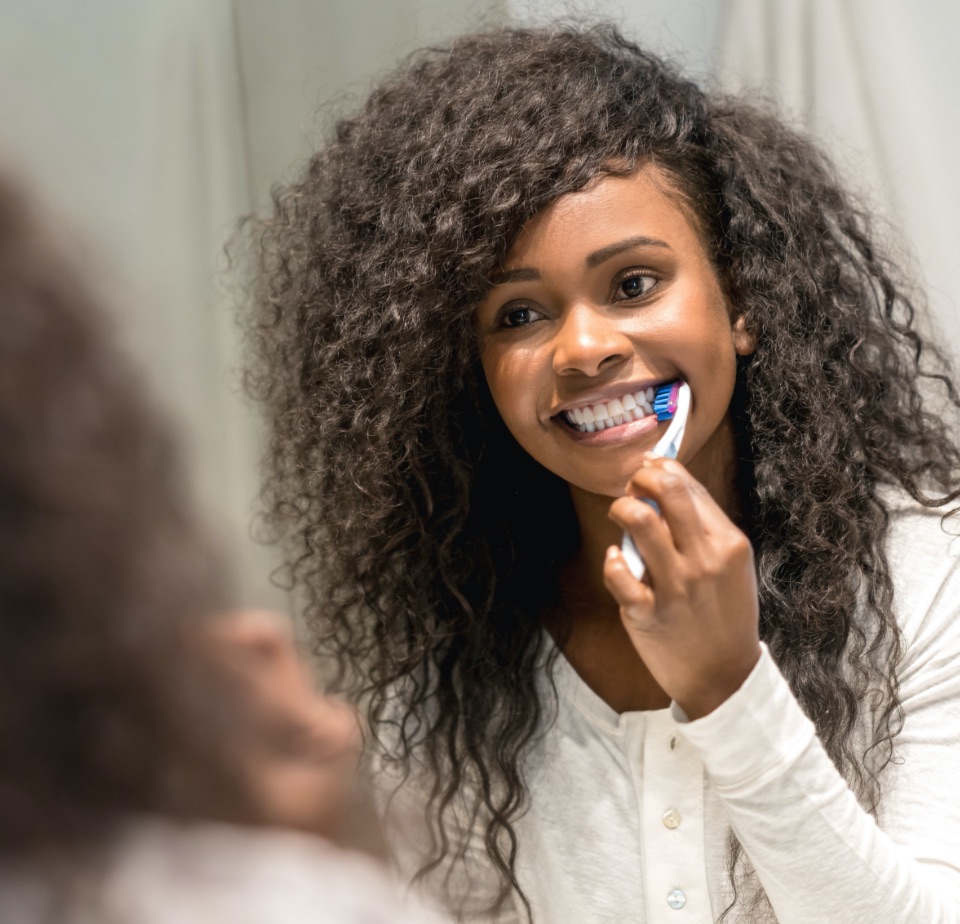How to Get Rid of Hard Tartar Build Up
What Is Dental Plaque?
Have you ever wondered what the plaque on your teeth actually is? Dental plaque, also known as tooth plaque, microbial plaque and dental biofilm, is a soft, sticky film that builds up on your teeth. Plaque is an extremely sticky, colorless to pale yellow deposit of biofilm that regularly forms on your teeth. When saliva, food, and fluids combine they produce bacteria deposits, which collect where the teeth and gums meet. Plaque contains bacteria, which produce acids that attack your tooth enamel and can damage your gums. If not treated, the damage could become permanent. It contains millions of bacteria that feed on the food and drinks you eat every day. If bacteria deposits from plaque on teeth aren't removed through regular brushing and flossing, they can cause tooth decay, gum disease, and tartar buildup.
Dental Plaque Leads to Tartar Buildup
Over time, if plaque isn't removed on a regular basis, minerals from your saliva are deposited into the plaque biofilm causing it to harden within 24 to 72 hours, turning into tartar. And while you can remove plaque at home, tartar removal requires the help of a dental professional. Did you know 68% of adults have tartar? Tartar, also called dental calculus, is a yellow or brown colored deposit that forms when plaque hardens on your teeth. Because tartar buildup on teeth is strongly bonded to the tooth enamel, it can only be removed by a dental professional. You have a greater risk of developing tartar with braces, dry mouth, crowded teeth, smoking and aging. Individuals vary greatly in their susceptibility to tartar buildup. For many, these deposits build up faster with age.
What Causes Dental Plaque and Tartar?
When saliva, food, and fluids combine in your mouth they produce an environment that allows the bacteria to grow and deposit which collect on teeth and gums and especially where the teeth and gums meet. Common foods that contribute to plaque formation and growth include those containing carbohydrates, or simple sugars, such as sucrose and starches, found in soft drinks and candy. Eating foods high in sugar like cakes, sweets, and fruit can cause an increase in plaque bacteria. Plaque bacteria can lead to gingivitis, caries and advanced gum disease, so it is important to take steps for treatment and prevention. Plaque hides between teeth and under the gum line. There's no way to avoid it entirely so it's important to maintain a good oral routine to keep it from accumulating. Certain foods, especially carbohydrates (foods containing sugars or starches), are big contributors to plaque growth such as milk, soft drinks, cake, and candy.
Spotting the Early Signs of Plaque On Teeth
Plaque can be a pale yellow color, but it can also be colorless making it difficult to see. That's why it's important to maintain good oral hygiene and see your dental professional every 6 months for a checkup. They may use dental mirrors to spot plaque in hard to see places, and scrape the plaque between your teeth with a dental scaler. Every set of teeth is unique, so ask your dentist for brushing and flossing tips to help address plaque buildup. If you want to know whether you're removing plaque properly from home, try staining it using plaque disclosing tablets, available at your local drug store. By staining and exposing plaque, it's easy to tell where you may need to do a better job of brushing and flossing so you can effectively remove plaque at home. The tablets' stains can easily be brushed away.
Conditions Related to Dental Plaque and Tartar
So why is plaque a problem? If you don't take the steps needed to prevent and get rid of plaque, it may lead to:
- Cavities: the acids produced by the bacteria in plaque can cause low pH level and can eat away at your tooth enamel.
- Gingivitis: Accumulation of plaque bacteria can cause inflammation of the gums.
- Bad Breath: Plaque buildup from poor dental hygiene can also cause your breath to smell bad.
Steps to Prevent Plaque and Tartar Buildup
Staying on top of your oral health and preventing plaque buildup on teeth is the best way to prevent tartar. To help prevent tartar, be sure to brush your teeth and use mouthwash at least twice daily, preferably with a tartar-control fluoride toothpaste like many from Crest, and floss once a day. And visit your dental office regularly for oral exams and cleanings. Crest can also help with the right products for your routine.
- Visit your dentist every 6 months. Adults who see their dentists regularly are less likely to have plaque related dental diseases.
- Choose an anti-plaque fluoride toothpaste like Crest® PRO-HEALTH Advanced Toothpaste.
- Floss daily to remove food particles and plaque between teeth. To prevent the buildup of plaque, be sure to floss once a day with a product like Glide Floss and brush your teeth at least twice a day with a fluoride, anti-plaque toothpaste, like Crest Pro-Health Toothpaste.
- Get an electric toothbrush, and remember to replace the head every 3 months. Use a quality toothbrush, such as any manual or rechargeable toothbrush from Oral-B and remember to replace it every three months or as soon as the bristles look worn.
- Avoid smoking to reduce the risk of increased plaque and tartar.
- Use a mouthwash such as Crest® PRO-HEALTH Multi-Protection Mouthwash to help prevent plaque buildup on teeth. to your routine provides 24-hour* protection against plaque and gingivitis, without the burn of alcohol. Also try Crest® PRO-HEALTH Advanced with Extra Tartar Protection to fight cavities and help prevent tartar.
Dental Plaque and Tartar Removal
There are two main methods to removing the plaque on your teeth: using the mechanical motion of brushing and flossing, to remove plaque, and exposing plaque to anti-bacterial ingredients to kill and help keep it from growing back. If you're looking for a comprehensive routine as well as at-home methods, see our steps below.
- Brush your teeth even better: An electric toothbrush is one of the most effective ways to get rid of plaque. Be sure to brush for at least 2 minutes, twice a day, every day. Remember to replace the brush head of your electric toothbrush every 3 months.
- Don't skip the floss: It's easy for food to get stuck in your teeth, and if you don't floss daily, bacteria can develop, and you've got plaque. Brushing alone can't cover every space in your mouth, so learn how to floss properly.
- Use an anti-plaque toothpaste. Anti-plaque fluoride toothpastes are great way to up the ante in your fight against plaque.
- Rinse with a mouthwash that helps fight plaque. It helps kill bacteria and prevents plaque regrowth.
Tartar buildup on the other hand bonds strongly to enamel and must be removed by a dental professional, which is why it's so important to be proactive and remove plaque before it becomes a problem. If you start seeing any signs of tartar buildup, be sure to see your dental professional.

Related articles
 tartar-and-plaque
tartar-and-plaque
Dental Plaque and Tartar: Causes, Prevention, and Removal
Read article
 tartar-and-plaque
tartar-and-plaque
Black Tartar on Teeth: Causes and Symptoms
Read article
 tartar-and-plaque
tartar-and-plaque
Back Teeth Cavities and Plaque Bacteria
Read article
Discover More
 Dental Plaque and Tartar: Causes, Prevention, and Removal
Dental Plaque and Tartar: Causes, Prevention, and RemovalHow to Get Rid of Hard Tartar Build Up
Source: https://crest.com/en-us/oral-care-tips/tartar-and-plaque/plaque-tartar-causes-prevention-removal